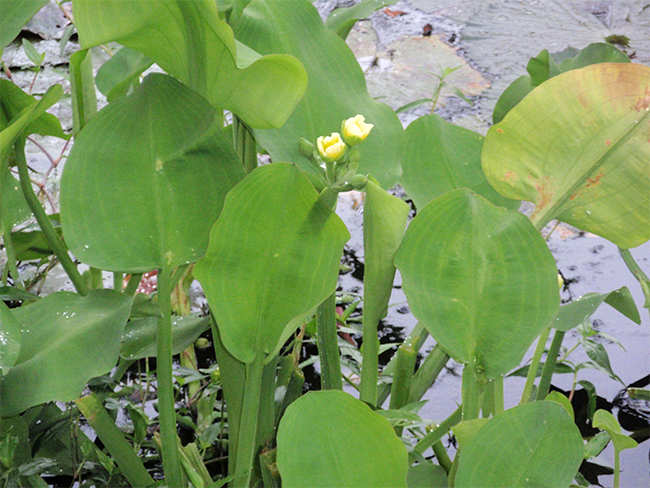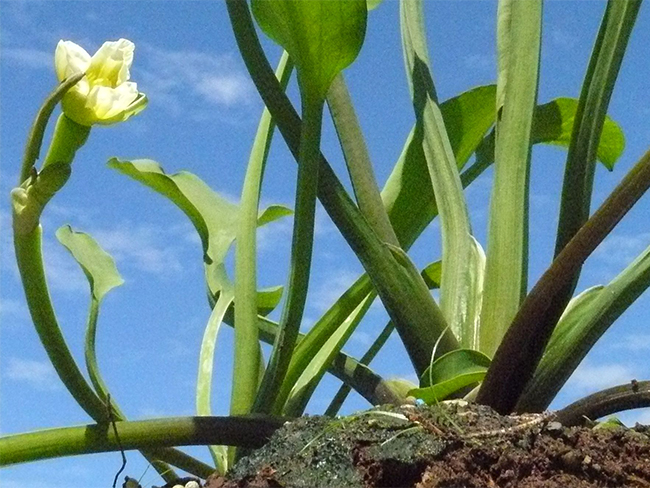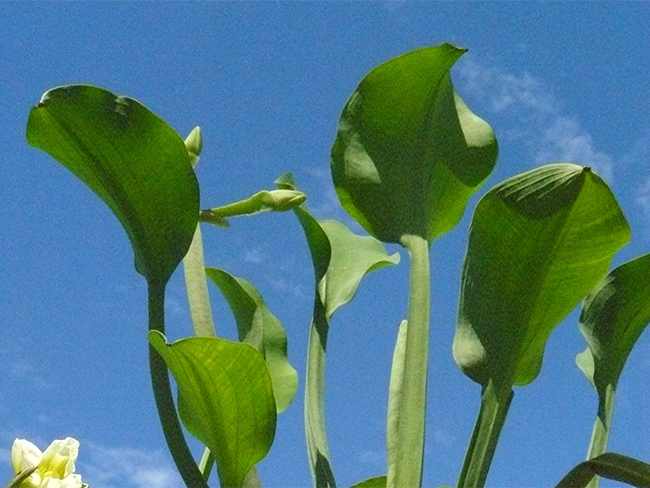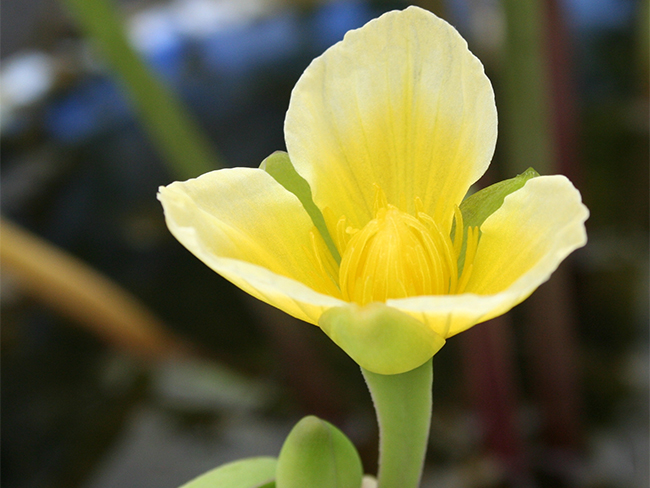Limnocharis
Scientific name: Limnocharis flava
Declaration status: Class C
Also known as yellow burrhead.
The native range of limnocharis extends from Mexico to Bolivia, Paraguay and northern Argentina.
It also has moved into parts of south-east Asia, Africa, the south Pacific and northern Australia.
Limnocharis has been detected in the Northern Territory in 2021.
The 2 infestations found were limited to ornamental ponds.
These infestations have been removed and there are presently no known infestations.
However, there are 3 known infestations in natural waterways in Queensland.
The level of threat posed by limnocharis has triggered a call for national eradication.
Limnocharis is consumed as a vegetable in parts of south-east Asia and India. It has also been sold as a vegetable in Darwin.
Impact
Limnocharis presents a serious agricultural and biodiversity threat to northern Australia.
It has the potential to invade wetlands, rivers and dams displacing native aquatic plants and animals.
Limnocharis can have all of the following impacts:
- replace native plants destroying freshwater wetlands
- form dense choking infestations that block waterways and reduce water quality
- increase water loss through evaporation
- reduce water storage capacity of dams and interfere with irrigation
- restrict recreational activities including swimming, fishing and boating
- provide a suitable habitat for mosquito breeding.
Spread
Limnocharis may have been spread inadvertently through contaminated imports of rice and intentionally for ornamental purposes.
Specifically, limnocharis colonises shallow freshwater wetlands and margins of deeper waterways.
Identification
You should use the following as a guide - there may be other plants or weeds that look similar:
- aquatic plant grows to 20cm to 100cm tall
- distinctive, triangular leaf and flower stalks
- petioles 5cm to 75cm long
- velvety leaf blades 5cm to 30cm long and 4cm to 25cm wide
- 'octopus’ like cup shaped groups of 5 to 15 flowers at the end of long stems
- individual flowers are small with three yellow lobes held up while flowering but bend and droop back into the mud or water after fruiting
- spherical, compound fruit 1.5cm to 2cm diameter
- contain many dark brown horseshoe shaped seeds 1mm to 1.5mm long.
If you are unsure, contact the Weed Management Branch.
View a 3D interactive model of this weed below.
© Regional NSW through NSW DPI Invasive Species Biosecurity
Model created by Rachel Klyve
Control
If you think you have seen limnocharis, or have this weed on your property, do not attempt to control it.
Contact the Weed Management Branch immediately for assistance.
Give feedback about this page.
Share this page:
URL copied!



